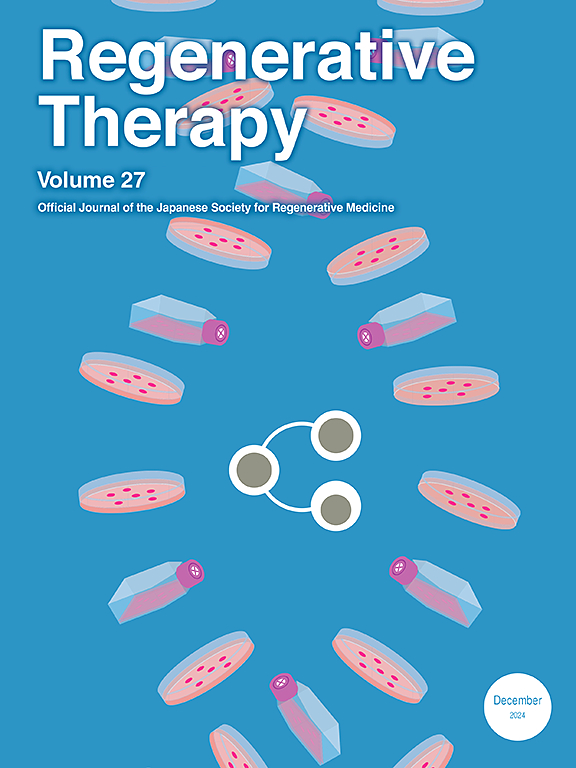生物安全柜更换后清除残留支原体、病毒、内毒素的清洁方法。
IF 3.4
3区 环境科学与生态学
Q3 CELL & TISSUE ENGINEERING
引用次数: 0
摘要
细胞处理操作可能会污染生物安全柜,应保持无菌。然而,由于原料中存在病毒、支原体和细菌,可能会发生意外污染。此外,虽然已经提出了几种消除这些污染物的方法,但尚未确定最佳方法。此外,由于其独特的特性和对清洁的潜在阻力,消除这些污染物的传统方法的有效性仍然不清楚。因此,本文提出了一种基于风险的方法来确定适当的清洁方法,并减少这些污染物在生物安全柜中交叉污染的可能性。方法:采用200 mJ/cm2紫外线照射20 min,蒸馏水、苯扎氯铵(BKC)、70%乙醇(ETH)等消毒剂擦拭生物安全柜内的支原体、病毒和内毒素。通过将污染物涂在不锈钢板上并使用每种方法进行清洗来评估每种方法的有效性。口腔支原体清洗后在液体培养基中培养2周。采用猫杯状病毒(FCV)检测其清毒效果,采用TCID50法检测其存在,采用内毒素法检测大肠杆菌干提取物的内毒素。结果:与其他清洁方法相比,紫外线照射和BKC擦拭可抑制支原体的生长,显著降低支原体的存在。值得注意的是,用ETH擦拭所有SUS304板后均检测到支原体,这是一种广泛使用的清洁方法。此外,对病毒的清洗效果显示,湿法组的TCID50为132,000 TCID50/板,而紫外线照射或BKC或DW清洗后的病毒均低于检出限。最后,与干燥组相比,紫外线照射没有显著减少内毒素的产生。此外,与干燥组相比,ETH擦拭没有显著减少内毒素,其残留量高于BKC或DW擦拭组。结论:目前在大多数细胞处理设施中使用的转换方案可能是无效的,因为即使在ETH擦拭后致病或非致病物质可能仍然存在,导致意外的交叉污染。据我们所知,这是第一个为细胞产品生产设施中支原体、病毒和内毒素的不同清洁方法提供参考数据的研究,并可能支持以证据为基础的管理策略的发展,以确保细胞产品加工的安全。本文章由计算机程序翻译,如有差异,请以英文原文为准。
Cleaning methods for biosafety cabinet to eliminate residual mycoplasmas, viruses, and endotoxins after changeover
Introduction
Cell-processing operations can potentially contaminate biosafety cabinets, which should be maintained sterile. However, unintended contamination can occur owing to the presence of viruses, mycoplasmas, and bacteria in the raw materials. Moreover, although several methods for expunging these contaminants have been proposed, an optimal method has not yet been determined. Additionally, the effectiveness of conventional methods for eliminating these contaminants remains unclear owing to their unique characteristics and potential resistances to cleaning. Therefore, this paper proposes a risk-based approach to identify appropriate cleaning methods and reduce the likelihood of cross-contamination in biosafety cabinets by these contaminants.
Methods
Various cleaning methods for eliminating mycoplasmas, viruses, and endotoxins from biosafety cabinets were evaluated, including ultraviolet (UV) irradiation at 200 mJ/cm2 for 20 min and wiping with disinfectants such as distilled water, benzalkonium chloride (BKC), and 70 % ethanol (ETH). The effectiveness of each method was evaluated by applying the contaminants on stainless steel plates and cleaning them using each method. Mycoplasma orale was cultured for 2 weeks in a liquid medium after cleaning. Feline calicivirus (FCV) was used for evaluating the virus-cleaning effectiveness and its presence was tested using the TCID50 test, whereas endotoxins obtained from the dried extract of Escherichia coli were measured via endotoxin testing.
Results
UV irradiation and wiping with BKC inhibited the growth of mycoplasma and significant decreased their presence compared with the other cleaning methods. Notably, mycoplasma were detected after wiping all SUS304 plates with ETH, which is a widely used cleaning method. Additionally, the cleaning efficacy for virus showed that the TCID50 of the wet group was 132,000 TCID50/plate, whereas those after UV irradiation or cleaning with BKC or DW were below the detection limit. Finally, UV irradiation did not significantly reduce the endotoxin production compared with that in the dry group. Additionally, wiping with ETH did not significantly reduce endotoxins compared with the dry group and their residues were higher than those detected after wiping with BKC or DW.
Conclusions
The changeover protocols currently employed in most cell-processing facilities may be ineffective as pathogenic or nonpathogenic materials may remain even after ETH wiping, leading to unintended cross-contamination. To the best of our knowledge, this is the first study to provide reference data of different cleaning methods for mycoplasmas, viruses, and endotoxins in cell-product manufacturing facilities, and can potentially support the development of evidence-based management strategies for ensuring safe cell-product processing.
求助全文
通过发布文献求助,成功后即可免费获取论文全文。
去求助
来源期刊

Regenerative Therapy
Engineering-Biomedical Engineering
CiteScore
6.00
自引率
2.30%
发文量
106
审稿时长
49 days
期刊介绍:
Regenerative Therapy is the official peer-reviewed online journal of the Japanese Society for Regenerative Medicine.
Regenerative Therapy is a multidisciplinary journal that publishes original articles and reviews of basic research, clinical translation, industrial development, and regulatory issues focusing on stem cell biology, tissue engineering, and regenerative medicine.
 求助内容:
求助内容: 应助结果提醒方式:
应助结果提醒方式:


